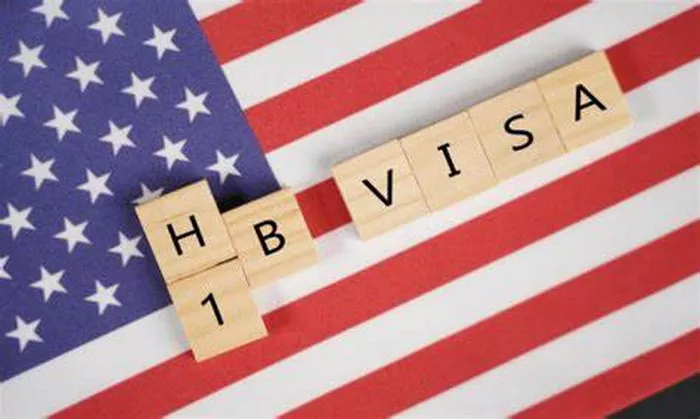In the dynamic landscape of immigration law and policy in the United States, the H-1B visa program stands out as a vital pathway for skilled foreign workers to contribute to the country’s economy. However, confusion often arises regarding whether obtaining an H-1B visa eventually leads to permanent residency, also known as a green card. In this comprehensive article, we delve into the intricacies of the H-1B visa program and its relationship to permanent residency.
Understanding the H-1B Visa Program
The H-1B visa is a non-immigrant visa category designed to allow U.S. employers to hire foreign workers in specialty occupations that require theoretical or technical expertise. These occupations typically include fields such as IT, engineering, mathematics, science, and medicine. To qualify for an H-1B visa, an individual must possess at least a bachelor’s degree or its equivalent and be sponsored by a U.S.-based employer.
Each year, the U.S. Citizenship and Immigration Services (USCIS) allocates a limited number of H-1B visas through a lottery system due to the high demand. The duration of an H-1B visa is initially granted for up to three years, with the possibility of extension for an additional three years, totaling a maximum of six years.
H-1B Visa and the Path to Permanent Residency
One of the most common misconceptions about the H-1B visa is that it automatically leads to permanent residency. While it is true that H-1B visa holders can pursue permanent residency, the visa itself does not directly grant this status. Instead, individuals must navigate a separate application process to obtain a green card.
Employer Sponsorship: The Pathway to Permanent Residency
The most common route for H-1B visa holders to obtain permanent residency is through employer sponsorship. This process typically involves the employer petitioning for the employee’s green card, demonstrating the need for their continued employment in the United States.
Employer-sponsored green card applications usually fall under one of several employment-based preference categories, including:
EB-1: Priority Workers
EB-2: Professionals Holding Advanced Degrees or Persons of Exceptional Ability
EB-3: Skilled Workers, Professionals, and Other Workers
The specific category depends on factors such as the individual’s qualifications, job role, and the needs of the employer. Once the petition is approved, the employee can apply for adjustment of status to become a lawful permanent resident.
Challenges and Considerations
While employer sponsorship offers a viable pathway to permanent residency for H-1B visa holders, several challenges and considerations merit attention:
1. Backlogs and Processing Times: The demand for employment-based green cards often exceeds the annual quota, leading to significant backlogs and extended processing times. Depending on the applicant’s country of birth and the preference category, waiting times can range from months to several years.
2. Job Portability: H-1B visa holders may face uncertainty regarding job changes or career advancement during the green card application process. Changing employers or job roles can impact the ongoing sponsorship and require reevaluation of the green card application.
3. Labor Market Test: To sponsor an employee for a green card, employers must demonstrate that there are no qualified U.S. workers available to fill the position. This process involves advertising the job opening and undergoing a labor market test, which can add complexity and time to the application process.
4. Immigration Policy Changes: The landscape of immigration policy in the United States is subject to change, impacting the requirements and procedures for obtaining permanent residency. Stay informed about policy developments and consult with immigration professionals for guidance.
Alternative Pathways to Permanent Residency
While employer sponsorship remains the primary pathway for H-1B visa holders to obtain permanent residency, alternative options may also be available:
1. Family Sponsorship: Individuals with close family members who are U.S. citizens or lawful permanent residents may be eligible for family-based green cards. Spouses, parents, and children of U.S. citizens, as well as siblings and unmarried children under 21 of lawful permanent residents, may qualify for family-sponsored immigration.
2. Self-Sponsorship: In certain circumstances, individuals may be eligible for self-sponsorship through extraordinary ability or investment-based visas. The EB-1A category, for example, is reserved for individuals with extraordinary ability in their field, while the EB-5 Immigrant Investor Program allows foreign investors to obtain green cards by investing in U.S. businesses.
3. Diversity Visa Lottery: The Diversity Visa Lottery, also known as the Green Card Lottery, offers a limited number of immigrant visas to individuals from countries with historically low rates of immigration to the United States. Winners of the lottery are selected through a randomized drawing and can apply for permanent residency.
Conclusion
While the H-1B visa program provides a valuable opportunity for skilled foreign workers to contribute to the U.S. economy, it is not a direct pathway to permanent residency. Instead, individuals must navigate a separate application process, often through employer sponsorship, to obtain a green card. Understanding the nuances of this process, including eligibility criteria, preference categories, and potential challenges, is essential for H-1B visa holders seeking to secure permanent residency in the United States. By staying informed and seeking professional guidance, individuals can navigate the complexities of immigration law and achieve their long-term goals of living and working in the United States as lawful permanent residents.


